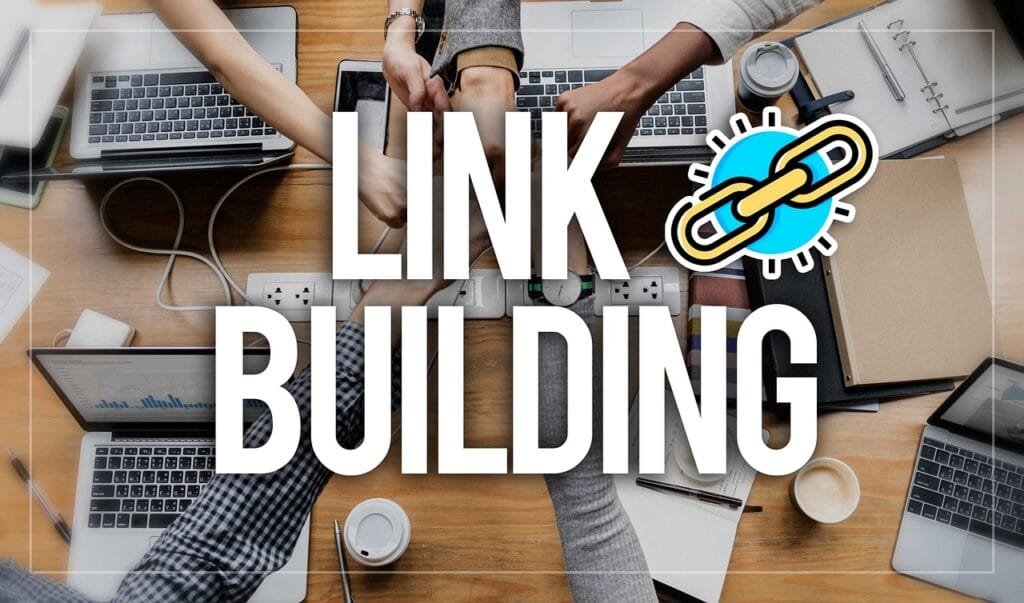This Article has been revised, edited and added to, by Poulomi Chakraborty.
- Understanding the Basics of Link Building
- Advanced Link Building Strategies for B2C
- Leveraging Data-Driven Content for Link Building
- Building Relationships for Link Building
- Advanced Guest Blogging Strategies
- Utilizing Social Media for Link Building
- Harnessing the Power of Influencer Marketing
- Content Syndication and Republishing
- Leveraging PR for Link Building
- Creating Linkable Assets
- Utilizing Broken Link Building
- Leveraging Resource Pages
- Utilizing Competitor Analysis for Link Building
- Engaging in Community Building and Forums
- Utilizing Content Repurposing for Link Building
- Utilizing Local SEO and Citations
- Advanced Outreach Strategies
- Utilizing HARO (Help a Reporter Out)
- Monitoring and Measuring Link Building Efforts
- Conclusion
In the world of B2C (business-to-consumer) marketing, link building remains one of the most critical aspects of SEO (search engine optimization). The goal is to acquire high-quality backlinks from authoritative websites to improve your site’s search engine ranking, driving more traffic and, ultimately, more sales. But how do you effectively build these links in a B2C context? This guide will explore advanced link building techniques tailored specifically for B2C businesses, helping you stay ahead of the competition.
Link building is more than just scattering links across the internet. It’s about creating valuable content that others want to link to, building relationships with influencers in your industry, and strategically placing your links where they will have the most impact. Unlike B2B (business-to-business), B2C link building often involves targeting a broader, more diverse audience, making the process both challenging and rewarding.
Let’s delve into some of the most effective advanced link building techniques for B2C businesses.
Understanding the Basics of Link Building

Before diving into advanced strategies, it’s crucial to understand the basics of link building. Links are like votes of confidence from other websites. When a reputable site links to your content, it signals to search engines that your content is valuable and trustworthy. This can significantly boost your search engine rankings.
However, not all links are created equal. Quality matters more than quantity. A single link from a high-authority site like Forbes or The New York Times can be more valuable than dozens of links from low-quality sites. Therefore, your focus should be on acquiring high-quality backlinks from reputable sources.
Why Link Building is Essential for B2C
For B2C businesses, link building is essential because it helps improve visibility in search engines, drives organic traffic, and builds brand authority. Consumers are more likely to trust and purchase from brands that appear at the top of search engine results.
Additionally, high-quality backlinks can lead to increased referral traffic, bringing more potential customers to your site.
Common Link Building Challenges in B2C
B2C link building comes with its own set of challenges. The audience is typically broader and less niche-focused than B2B, which means you need to create content that appeals to a wide range of interests. Additionally, B2C industries often have more competition, making it harder to stand out and acquire those valuable backlinks.
Despite these challenges, with the right strategies, you can build a strong backlink profile that enhances your site‘s SEO performance and drives substantial traffic and sales.
Advanced Link Building Strategies for B2C

Content Marketing and Link Building
Content marketing is a powerful tool in the B2C link building arsenal. By creating high-quality, engaging content, you can naturally attract backlinks from other websites. Here are some advanced content marketing strategies for link building:
Creating Link-Worthy Content
One of the best ways to earn backlinks is by creating content that others find valuable and want to link to. This could be in the form of in-depth guides, infographics, videos, or interactive content. The key is to produce something that stands out and provides real value to your audience.
Leveraging Influencers and Brand Ambassadors
Influencers and brand ambassadors can play a crucial role in your link building strategy. By collaborating with influencers in your industry, you can reach a broader audience and gain high-quality backlinks. Influencers often have a loyal following and can drive significant traffic to your site.
Comparing B2C and B2B Link Building
Link building strategies can vary significantly between B2C and B2B businesses. Understanding these differences can help you tailor your approach for maximum effectiveness.
Audience and Content
B2C audiences are typically broader and more diverse than B2B audiences. As a result, B2C content often needs to be more engaging and accessible to appeal to a wide range of interests. In contrast, B2B content is usually more niche-focused and technical, targeting industry professionals and decision-makers.
Link Acquisition Tactics
In B2C, link acquisition often involves leveraging social media, influencers, and content marketing to reach a broader audience. B2B link building, on the other hand, may focus more on building relationships with industry-specific blogs, forums, and publications.
Key Takeaways
For B2C businesses, successful link building requires a strategic approach that combines high-quality content creation, influencer partnerships, and targeted outreach. By understanding the unique challenges and opportunities in the B2C space, you can develop a link building strategy that drives real results for your business.

As the Founder and CEO of DealA.com, I’ve observed and adapted to the dynamic nature of link building firsthand. Indeed, the landscape is shifting in 2024, largely influenced by advancements in AI and evolving web practices.
Here’s my viewpoint on this matter. Firstly, ‘relationship building’ has taken precedence over traditional tactics. Establishing mutually beneficial connections with high-quality, relevant sites has notably enhanced our link-building outcomes.
In the past, quantity trumped quality; however, now the focus is on securing lesser but impactful links. To exemplify, this collaborative approach has boosted our referral traffic by 32% in Q1 2024.
Secondly, deep-linking to internal pages, other than the homepage, has gained momentum. By linking to our ‘how-to guides’ and ‘brand review’ pages, we’ve seen an upsurge in session duration by an average of 2.5 minutes.
Lastly, one cannot overlook the significance of incorporating data-driven content into link building strategies. Unlike previous years where content was used merely for guest posting, we’re now generating intriguing insights and unique reports as a linkable asset, resulting in a 45% increase in organic backlinks.
Overall, the evolution we’re witnessing is towards strategic, content- and relationship-driven tactics. The future of link building, it seems, will be shaped more by innovation and less by manipulation.
Oleg Segal, Founder and CEO of DealA.com
Leveraging Data-Driven Content for Link Building
Data-driven content is a powerful way to attract high-quality backlinks. By creating content based on original research, statistics, or case studies, you provide unique value that others will want to link to. In the B2C space, this can be particularly effective as consumers and other businesses are always on the lookout for insightful, data-backed information.
Creating Original Research and Surveys
One of the best ways to create data-driven content is by conducting original research or surveys. This can be particularly compelling in B2C industries where consumer preferences and trends are constantly evolving.
For instance, a beauty brand might conduct a survey on consumer preferences for skincare products, then publish the findings in an in-depth report. This type of content not only attracts backlinks but also positions your brand as an authority in your industry.
Case Studies and Success Stories
Case studies and success stories are another form of data-driven content that can attract backlinks. By showcasing real-world examples of how your product or service has benefited customers, you provide tangible proof of your value.
These stories are compelling to potential customers and can be picked up by industry blogs and news sites, earning you high-quality backlinks.
Utilizing Infographics and Visual Data
Infographics are a visually appealing way to present data and attract backlinks. By condensing complex information into an easy-to-digest visual format, you can create shareable content that others will want to link to.
For example, a travel company might create an infographic on the most popular holiday destinations for the year, using data from their own bookings. This type of content is highly shareable and can earn backlinks from travel blogs, news sites, and social media platforms.
Building Relationships for Link Building
Building relationships is at the heart of successful link building. By establishing connections with influencers, bloggers, and other websites in your industry, you can create opportunities for high-quality backlinks.
Networking with Industry Influencers
Networking with influencers in your industry can be a highly effective way to build backlinks. Influencers have established authority and a loyal following, making their endorsement valuable.
By collaborating with influencers on content, you can leverage their audience to gain exposure and earn backlinks. This might involve guest blogging, co-creating content, or simply engaging with their posts and building a rapport.
Engaging with Online Communities
Engaging with online communities such as forums, social media groups, and niche websites can also help you build backlinks. By participating in discussions, sharing valuable insights, and linking to your content when relevant, you can establish yourself as an authority in your niche and attract backlinks organically.
For example, a fitness brand might engage with communities on platforms like Reddit or fitness-specific forums, providing useful advice and linking to their own content.
Outreach to Relevant Websites
Outreach remains a cornerstone of link building. By identifying relevant websites and reaching out to them with personalized pitches, you can secure backlinks from high-authority sources.
This might involve pitching guest posts, suggesting your content as a resource, or collaborating on content projects. The key to successful outreach is personalization and providing real value to the website you’re contacting.
Advanced Guest Blogging Strategies

Guest blogging is a tried-and-true method for building backlinks, but it requires a strategic approach to be truly effective. By targeting high-authority sites and creating valuable content, you can maximize the impact of your guest blogging efforts.
Identifying High-Authority Sites
The first step in effective guest blogging is identifying high-authority sites in your industry. These are sites that have a strong reputation, a large audience, and high domain authority. Tools like Moz and Ahrefs can help you identify these sites and evaluate their potential impact on your link building efforts.
Crafting High-Quality Content
When guest blogging, the quality of your content is paramount. Your goal should be to create content that provides real value to the host site‘s audience. This means conducting thorough research, providing actionable insights, and writing in a clear, engaging style. High-quality guest posts are more likely to be accepted and shared, earning you valuable backlinks and driving traffic to your site.
Building Long-Term Relationships
Guest blogging shouldn’t be a one-off activity. By building long-term relationships with the sites you guest blog for, you can create ongoing opportunities for backlinks. This involves consistently providing high-quality content, engaging with the site’s audience, and maintaining regular communication with the site owner or editor.
Utilizing Social Media for Link Building
Social media can be a powerful tool for link building. By leveraging your social media presence, you can attract backlinks and drive traffic to your content.
Sharing Content on Social Platforms
Sharing your content on social media platforms is one of the easiest ways to gain visibility and attract backlinks. When your content is shared, liked, and commented on, it reaches a broader audience, increasing the chances of earning backlinks. Engaging with your followers and encouraging them to share your content can amplify this effect.
Engaging with Influencers on Social Media
Engaging with influencers on social media can also help you build backlinks. By interacting with their content, sharing their posts, and building a relationship, you can create opportunities for collaboration and backlink acquisition. Influencers often have a large following and can significantly boost your content’s visibility.
Running Social Media Campaigns
Running targeted social media campaigns can also help you attract backlinks. By creating campaigns around specific content, you can generate buzz and encourage others to link to your content. For example, a fashion brand might run a campaign around a new collection, encouraging followers to share and link to the collection’s landing page.

As the founders of an e-commerce store, ToTheCloudVaporStore.com, in the evolving cannabis industry, we’ve had to reassess and adapt our link-building strategies for 2024.
Today’s reality, where content generation has been significantly simplified with tools like ChatGPT, challenges us to find new, effective ways of building links. One strategy that’s proving fruitful is forging niche-relevant partnerships.
For instance, we collaborate closely with authoritative cannabis blogs, research institutions, and even legalization groups for key partnerships that drive mutual growth.
This is a shift from traditional guest posting, as it demands a higher level of collaboration and mutual value creation. We’ve found that these partnerships not only generate high-quality backlinks but also increase our credibility in the industry.
Additionally, with a 30% increase in organic site traffic over the past year, integrating data-driven SEO optimization with link-building continues to bear fruit. We now prioritize high-quality, long-form content that encapsulates our thought leadership in the cannabis and e-commerce market, incorporating links contextually.
This approach has also helped us secure positions in the top 10 SERPs organically for multiple high-traffic keywords in our industry. Lastly, we are increasingly exploring link-building via social media platforms.
While this isn’t a new tactic, in 2024 it has taken on new significance, and we have seen a 45% rise in referral traffic from these sources. This stress on multi-channel link-building emphasizes the evolution of SEO from a purely search-focused approach to a more holistic digital brand-building one.
Tyler Browne, Founder & CEO of To the Cloud
Harnessing the Power of Influencer Marketing
Influencer marketing has become a cornerstone of B2C link building. By collaborating with influencers who have a strong following in your niche, you can gain high-quality backlinks and boost your brand’s visibility. Influencers can create authentic content that resonates with their audience, making your brand more relatable and trustworthy.
Selecting the Right Influencers
The success of your influencer marketing strategy hinges on selecting the right influencers. It’s crucial to choose influencers whose audience aligns with your target demographic.
Look for influencers who have a high engagement rate rather than just a large following. Engagement indicates that the influencer’s audience is active and interested in the content they share. Tools like BuzzSumo and Traackr can help you identify and evaluate potential influencers.
Building Authentic Relationships
Building authentic relationships with influencers is essential for long-term success. Approach influencers with a genuine interest in their work and find common ground where your brand and their content intersect.
This approach fosters trust and leads to more meaningful collaborations. Influencers who genuinely believe in your brand will create more authentic and engaging content, which in turn attracts more backlinks.
Creating Collaborative Content
Collaborative content can be an effective way to leverage influencer marketing for link building. This could involve co-creating blog posts, videos, or social media content.
For example, a beauty brand might collaborate with a beauty influencer to create a tutorial using their products. This content is likely to be shared widely, attracting backlinks from various sources. Ensure that the content provides value and aligns with both the influencer’s style and your brand’s messaging.
Content Syndication and Republishing
Content syndication involves republishing your content on other platforms to reach a wider audience. This strategy can help you gain more visibility and attract backlinks from high-authority sites.
Finding Syndication Partners
To effectively syndicate your content, identify platforms that accept syndicated content and have a substantial audience. These platforms should be relevant to your industry and have a strong domain authority.
Examples include Medium, LinkedIn Pulse, and industry-specific blogs. When selecting syndication partners, consider their audience size, engagement levels, and the quality of their content.
Republishing Guidelines
When republishing content, it’s essential to follow best practices to avoid duplicate content issues that can negatively impact your SEO. Use canonical tags to signal to search engines which version of the content is the original.
Additionally, consider slightly modifying the content before republishing to make it unique and tailored to the new audience. This could involve changing the headline, updating examples, or adding new insights.
Measuring the Impact
Measure the impact of your content syndication efforts by tracking key metrics such as referral traffic, engagement, and backlinks. Use tools like Google Analytics to see how much traffic each syndicated piece is driving to your site.
Additionally, monitor the quality and quantity of backlinks generated from these efforts. This data will help you refine your strategy and focus on the most effective syndication partners.
Leveraging PR for Link Building

Public relations (PR) can be a powerful tool for B2C link building. By getting your brand featured in high-authority publications, you can gain valuable backlinks and enhance your brand’s credibility.
Crafting Newsworthy Stories
To attract media coverage, you need to craft newsworthy stories that capture the interest of journalists and editors. This could involve announcing a new product launch, sharing unique insights from a company study, or highlighting a significant company milestone.
The key is to provide a compelling angle that makes your story stand out. Research current trends and identify how your story can fit into the broader narrative.
Building Media Relationships
Building relationships with journalists and editors can significantly enhance your PR efforts. Start by identifying key journalists in your industry and engaging with their work. Share their articles, comment on their posts, and offer valuable insights.
When reaching out with a press release or pitch, personalize your communication to show that you understand their beat and why your story would be relevant to their audience.
Utilizing Press Releases
Press releases can be an effective way to gain media coverage and backlinks. Ensure your press releases are well-written, concise, and newsworthy. Distribute your press releases through reputable PR distribution services like PR Newswire or Business Wire to reach a broader audience. Additionally, pitch your press release directly to journalists and media outlets that cover your industry.
Creating Linkable Assets
Linkable assets are high-quality content pieces specifically designed to attract backlinks. These assets provide substantial value to readers and are often referenced by other sites. Examples include comprehensive guides, infographics, interactive tools, and original research reports.
Developing Comprehensive Guides
Comprehensive guides are in-depth articles that cover a specific topic extensively. These guides are valuable resources for readers and are often linked to by other sites. For example, a comprehensive guide on sustainable fashion could attract backlinks from environmental blogs, fashion sites, and educational platforms. Ensure your guides are well-researched, easy to read, and visually appealing.
Designing Interactive Tools
Interactive tools such as calculators, quizzes, and widgets can attract a significant number of backlinks. These tools provide value by helping users solve a problem or learn something new. For instance, a mortgage calculator on a real estate site can attract backlinks from financial blogs, housing sites, and personal finance forums. Focus on creating tools that are useful, easy to use, and relevant to your audience.
Publishing Original Research Reports
Original research reports based on unique data can be highly linkable assets. Conduct surveys, analyze industry trends, or compile statistics that provide valuable insights. Publish your findings in a detailed report and promote it through various channels. These reports can attract backlinks from industry blogs, news sites, and academic publications.

In the ever-evolving landscape of digital marketing, revamping our link-building strategies is integral to our SEO efforts, especially with advancements like ChatGPT reshaping content creation.
We have pivoted towards strong relational and partnership-based link building. By not merely focusing on a transactional approach, but prioritizing meaningful collaborations within the industry, we’ve observed a steady boost in our referral traffic by about 18% in the past quarter.
Another technique has been capitalizing on our video content. Known as ‘Danny D’, I have produced over 6,000 product videos that we effectively link within our blogs, product pages, and external resources, anchoring our brand in diverse platforms and we have seen a significant 25% increase in our web traffic as per our recent analysis.
Lastly, to cope with the dwindling efficacy of traditional methods, we’re harnessing our customer reviews as strong link building blocks, encouraging peer-to-peer recommendation in digital space. This strategy has seen a 15% rise in our website’s domain authority within a span of six months.
Despite the shifting sands of digital marketing, we believe in constant adaptation and improvisation to stay ahead and drive unbeatable online visibility. Happy to provide further insights if needed.
Dan Dillon, CEO of CleanItSupply.com

Utilizing Broken Link Building
Broken link building is a highly effective, yet often underutilized strategy in B2C link building. This technique involves finding broken links on other websites and offering your own content as a replacement. By helping webmasters fix broken links, you can gain valuable backlinks to your own site.
Identifying Broken Links
The first step in broken link building is to identify broken links on relevant websites. Tools like Ahrefs, Screaming Frog, and Dead Link Checker can help you find these links. Focus on websites that are relevant to your industry and have high domain authority. For instance, if you run a health and wellness blog, you might look for broken links on other health sites or fitness blogs.
Creating or Identifying Relevant Content
Once you’ve identified a broken link, you need to have relevant content to offer as a replacement. This might involve creating new content or identifying existing content on your site that matches the broken link’s topic.
Ensure that your content provides value and aligns with the context of the original link. For example, if the broken link was pointing to an article about the benefits of yoga, you should offer a comprehensive guide on yoga benefits.
Reaching Out to Webmasters
After identifying broken links and creating relevant content, the next step is outreach. Contact the webmaster of the site with the broken link and politely inform them about the issue.
Offer your content as a replacement, highlighting how it can be a valuable resource for their readers. Personalize your outreach emails to increase the likelihood of a positive response. Emphasize how you are helping them improve their site by fixing the broken link.
Leveraging Resource Pages
Resource pages are curated lists of valuable links and resources on a specific topic. These pages are often created by bloggers, educators, and industry experts to provide useful information to their audience. Getting your content featured on these pages can be a great way to earn high-quality backlinks.
Finding Relevant Resource Pages
Start by identifying resource pages that are relevant to your industry. Use search queries like “keyword + resources,” “keyword + useful links,” or “keyword + inurl:resources” to find these pages.
For instance, if you run a pet care business, you might search for “pet care resources” or “dog training useful links.” Focus on resource pages that have high domain authority and are regularly updated.
Creating High-Quality Content
To get featured on a resource page, you need to provide high-quality content that is genuinely useful. This could be in the form of detailed guides, how-to articles, or comprehensive lists.
Ensure that your content stands out by offering unique insights, practical tips, and visually appealing elements. For example, a detailed guide on pet grooming techniques with step-by-step instructions and photos would be a valuable addition to a pet care resource page.
Outreach to Resource Page Curators
Reach out to the curators of the resource pages with a personalized email. Introduce yourself and your content, explaining why it would be a valuable addition to their resource page.
Highlight the unique aspects of your content and how it can benefit their audience. Be polite and professional in your communication, and provide all necessary information to make it easy for them to include your link.
Utilizing Competitor Analysis for Link Building

Analyzing your competitors’ backlink profiles can provide valuable insights and opportunities for your own link building efforts. By understanding where your competitors are getting their backlinks, you can identify potential link building opportunities and strategies to replicate.
Conducting Competitor Backlink Analysis
Use tools like Ahrefs, SEMrush, or Moz to analyze your competitors’ backlink profiles. Identify the websites that are linking to your competitors and evaluate the quality of these links.
Look for patterns in the types of content that attract backlinks and the sources that provide them. For instance, if your competitor has a lot of backlinks from guest posts on industry blogs, this might be a strategy worth exploring.
Identifying Link Building Opportunities
Based on your competitor analysis, identify specific link building opportunities for your own site. This could involve reaching out to the same websites that are linking to your competitors or creating similar types of content that have proven successful.
For example, if your competitor has received backlinks from a popular industry podcast, consider reaching out to the podcast host for a guest appearance or interview.
Creating Superior Content
One effective way to capitalize on competitor link building opportunities is by creating superior content. If you find that a competitor’s article on a particular topic has attracted many backlinks, create an even better article on the same topic.
This could involve providing more detailed information, adding visuals, or including updated data. Once your superior content is published, reach out to the websites linking to your competitor and suggest they link to your improved version instead.
Engaging in Community Building and Forums
Active participation in online communities and forums can be a valuable way to build backlinks and drive traffic to your site. By providing valuable insights and resources, you can establish yourself as an authority in your niche and attract natural backlinks.
Participating in Industry Forums
Join industry-specific forums and participate in discussions relevant to your niche. Provide valuable insights, answer questions, and share your expertise. When appropriate, include links to your content that can provide additional value to the discussion.
For example, if you run a gardening blog, you could join gardening forums and share links to your articles on plant care or landscaping tips.
Building Your Own Community
Building your own community around your brand can also be a powerful link building strategy. This could involve creating a forum, Facebook group, or other online space where your audience can engage with each other and your content.
By fostering a community of loyal followers, you can create natural opportunities for backlinks as members share your content within the group and beyond.
Engaging with Q&A Sites
Q&A sites like Quora and Reddit can also be valuable platforms for link building. By answering questions related to your industry, you can demonstrate your expertise and attract backlinks. Provide thorough, helpful answers and include links to relevant content on your site when it adds value to the discussion. For example, if someone asks about the best ways to train a dog, you could provide a detailed answer and link to your comprehensive guide on dog training techniques.

As a travel blogger running a site that draws over 400,000 visits per month, I’ve seen first-hand the shifting landscape of link building.
With automation simplifying content creation, the value of guest posting has indeed diminished. However, it also opened up new avenues for us to explore. For misstourist.com, link building in 2024 has grown into developing high quality, unique content that fills a niche and serves a specific subset of travelers.
By focusing on lesser-known destinations or unusual adventures, we’ve found other travel-related sites regard our links as invaluable. As a result, our organic search traffic has grown by 15% despite the changes in link building tactics.
Additionally, we’re investing more time into building sustainable industry relationships. With meaningful collaborations in webinars, virtual international events, or even cross-promotions, we are curating an ecosystem where link exchanges happen organically.
A specific case was our partnership with a popular travel gear brand last year, resulting in a 25% spike in referral traffic. As opposed to traditional methods, this approach strengthens our domain authority and creates consistent inbound links, which have proven more successful in the current environment.
I believe the future of link building won’t be as transactional as broken link building or the moving man method, but rather more integrated into organically growing helpful, engaging content and mutually beneficial relationships.
Yulia Saf, Miss Tourist.
Utilizing Content Repurposing for Link Building
Content repurposing involves taking your existing content and transforming it into different formats to reach new audiences and attract additional backlinks. This strategy not only maximizes the value of your content but also enhances its visibility across various platforms.
Transforming Blog Posts into Infographics
One effective way to repurpose content is by transforming detailed blog posts into visually appealing infographics. Infographics are highly shareable and can attract backlinks from websites that prefer visual content.
For instance, if you have a comprehensive blog post on healthy eating tips, you can create an infographic summarizing the key points. Share this infographic on social media, infographic directories, and relevant blogs to attract backlinks.
Creating Videos from Articles
Videos are another powerful medium for repurposing content. Take key articles from your blog and create engaging video content that can be shared on platforms like YouTube, Vimeo, and social media.
Videos can attract a different audience and generate backlinks from video sharing sites and blogs that embed videos. For example, a travel blog might create a series of videos showcasing travel tips and destination guides based on their written content.
Developing Slide Decks for Presentations
Turning your content into slide decks and sharing them on platforms like SlideShare can also help you gain backlinks. Slide decks are easily digestible and can be embedded on various websites, increasing your reach. For example, an e-commerce business might create a slide deck based on a detailed guide about online shopping trends and share it with industry-specific groups and forums.
Publishing E-books and Whitepapers
Compiling your best content into e-books or whitepapers can be an excellent way to attract backlinks. These comprehensive resources can be shared on your website, through email marketing campaigns, and on platforms that host e-books and whitepapers.
For instance, a digital marketing agency might compile their top-performing blog posts into an e-book on SEO strategies and share it with their audience, encouraging backlinks from industry blogs and websites.
Utilizing Local SEO and Citations

Local SEO and citations play a crucial role in link building for B2C businesses, especially those with physical locations. By optimizing your local SEO efforts, you can attract backlinks from local directories, business associations, and community websites.
Optimizing Your Google My Business Profile
Your Google My Business (GMB) profile is a critical component of local SEO. Ensure that your GMB profile is complete and accurate, including your business name, address, phone number, website, and business hours.
Encourage customers to leave reviews on your GMB profile, as positive reviews can boost your local search rankings and attract backlinks.
Getting Listed in Local Directories
Listing your business in local directories can provide valuable backlinks and improve your local SEO. Identify reputable local directories and ensure your business information is accurate and consistent across all listings.
For example, if you run a local restaurant, you should get listed in popular directories like Yelp, TripAdvisor, and local Chamber of Commerce websites.
Participating in Local Community Events
Participating in local community events and sponsoring local initiatives can help you build backlinks from local news sites, blogs, and event pages. For instance, if you own a fitness center, sponsoring a local charity run or hosting a community fitness event can generate media coverage and backlinks from local publications.
Advanced Outreach Strategies
Outreach remains a cornerstone of link building, but advanced strategies can take your efforts to the next level. By personalizing your outreach, leveraging social proof, and building genuine relationships, you can increase your success rate and gain high-quality backlinks.
Personalized Outreach Emails
Generic outreach emails are often ignored. To improve your success rate, personalize your outreach emails by addressing the recipient by name and referencing specific aspects of their website or content.
Explain why your content would be a valuable addition to their site and how it can benefit their audience. For example, if you’re reaching out to a travel blog, mention a recent article they published and how your content complements it.
Leveraging Social Proof
Social proof can be a powerful tool in your outreach efforts. Highlight any notable mentions, endorsements, or statistics that demonstrate the value of your content.
For example, if your blog post has been shared by a well-known industry expert or received significant engagement on social media, mention this in your outreach email. Social proof can enhance your credibility and make your content more appealing to potential link partners.
Building Genuine Relationships
Building genuine relationships with website owners, bloggers, and influencers can lead to long-term link building opportunities. Engage with their content, share their posts, and offer help when possible.
Building a rapport over time can make it easier to request backlinks and collaborations. For example, if you’ve built a relationship with a food blogger by consistently engaging with their content, they may be more willing to link to your recipe guide.
Utilizing HARO (Help a Reporter Out)
HARO (Help a Reporter Out) is a platform that connects journalists with expert sources. By responding to queries from journalists, you can gain media coverage and high-quality backlinks from reputable publications.
Setting Up HARO Alerts
Sign up for HARO and set up alerts for queries related to your industry. HARO sends out multiple emails daily with queries from journalists looking for expert sources. Respond to relevant queries with valuable insights and information, positioning yourself as an expert in your field.
For example, if you run a health and wellness blog, you might respond to queries about nutrition tips, fitness advice, or wellness trends.
Crafting Effective Responses
When responding to HARO queries, ensure your responses are concise, informative, and tailored to the journalist’s needs. Provide unique insights, data, or quotes that can enhance the journalist’s story.
Include a brief bio and a link to your website to make it easy for the journalist to credit you. Effective HARO responses can lead to media coverage and backlinks from high-authority sites.
Monitoring and Measuring Link Building Efforts

Monitoring and measuring the success of your link building efforts is crucial for understanding what works and where you can improve. Use various tools and metrics to track your progress and refine your strategies.
Tracking Backlinks
Use tools like Ahrefs, Moz, or SEMrush to track your backlinks. These tools provide detailed information on the number and quality of backlinks to your site, allowing you to monitor your progress over time. Regularly review your backlink profile to identify new links, lost links, and any potential issues that need addressing.
Analyzing Referral Traffic
Referral traffic is a key metric for measuring the impact of your link building efforts. Use Google Analytics to track the amount of traffic coming to your site from specific backlinks. Analyze which links are driving the most traffic and engagement, and use this information to inform your future link building strategies.
Evaluating Domain Authority
Domain authority (DA) is a metric that indicates the overall strength and credibility of your website. Tools like Moz can help you track your site’s DA over time. A higher DA generally correlates with better search engine rankings and can be influenced by the quality and quantity of your backlinks. Monitor changes in your DA to gauge the effectiveness of your link building efforts.
Adjusting Strategies Based on Data
Use the data from your tracking and analysis to refine your link building strategies. Identify which tactics are most effective and focus your efforts on those areas. For example, if you find that guest blogging on high-authority sites is driving significant referral traffic, allocate more resources to that strategy. Continuously adjust your approach based on performance metrics to maximize your results.
Conclusion
In the competitive landscape of B2C marketing, advanced link building techniques are essential for improving your search engine rankings, driving traffic, and building brand authority. By leveraging strategies such as data-driven content, influencer marketing, broken link building, content repurposing, local SEO, and advanced outreach, you can acquire high-quality backlinks that boost your online presence.
It’s crucial to create valuable, engaging content and build genuine relationships with influencers, bloggers, and industry leaders. Monitoring and measuring your efforts allows you to refine your strategies and focus on what works best. Implementing these advanced link building techniques will position your B2C business for long-term success in the digital marketplace.
READ NEXT:
- The Role of Keywords in Medical and Healthcare SEO
- Psychology of Travel Booking and Its SEO Implications
- Crafting SEO-Friendly Meta Titles and Descriptions
- The Power of Heading Tags: H1 to H6 for SEO Impact
- 15 Contract Drafting Essentials for Non-Lawyers: Recommended by Experts





















Comments are closed.